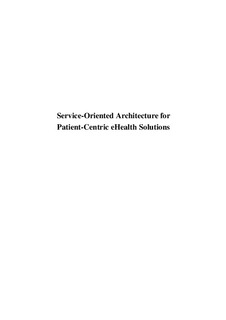| dc.description.abstract | The world is in shortage of about 7.2 million healthcare workers in 2013, and the
figure is estimated to grow to 12.9 million by 2035, according to the World Health
Organization (WHO). On the other hand, the median age of the world’s population
was predicted to increase from 26.6 years in 2000 to 37.3 years in 2050, and then to
45.6 years in 2100. Thus further escalating the need for new and efficient healthcare
solutions.
Telehealth, telecare, and Ambient Assisted Living (AAL) solutions promise to
make healthcare services more sustainable, and to enable patients to live more independently
and with a higher quality of life at their homes. Smart homes will
host intelligent, connected devices that integrate with the Internet of Things (IoT)
to form the basis of new and advanced healthcare systems. However, a number
of challenges needs to be addressed before this vision can be actualised. These
challenges include flexible integration, rapid service development and deployment,
mobility, unified abstraction, scalability and high availability, security and privacy.
This thesis presents an integration architecture based on Service-Oriented Architecture
(SOA) that enables novel healthcare services to be developed rapidly by
utilising capabilities of various devices in the patients’ surroundings. Special attention
is given to a service broker component, the Information Integration Platform
(IIP), that has been developed to bridge communications between everyday objects
and Internet-based services following the Enterprise Service Bus (ESB) principles.
It exposes its functionalities through a set of RESTfulWeb services, and maintains a
unified information model which enables various applications to access in a uniform
way. The IIP breaks the traditional vertical “silo” approach of integration, and handles
information dissemination task between information providers and consumers
by adopting a publish/subscribe messaging pattern.
The feasibility of the IIP solution is evaluated both through prototyping and testing
the platform’s representative healthcare services, e.g., remote health monitoring
and emergency alarms. Experiments conducted on the IIP reveal how performance
aspects are affected by needs for security, privacy, high availability, and scalability. | nb_NO |
